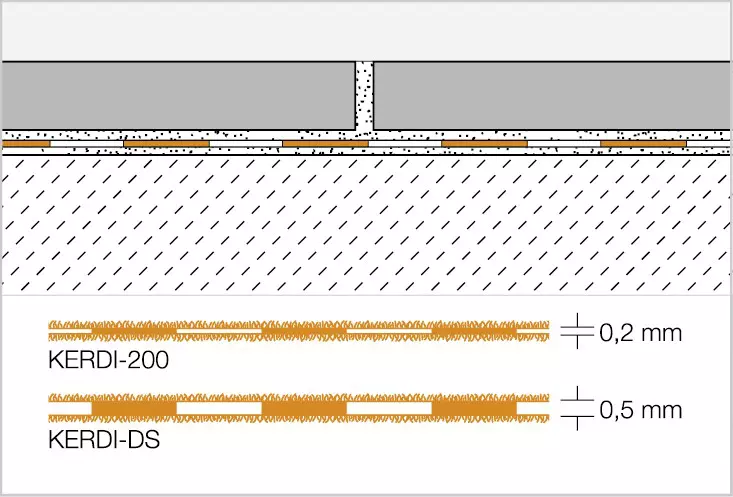Schlüter-KERDI-DS is a waterproofing membrane and vapour barrier bonded to a tile covering, e.g. for use in swimming pools and spa areas, as well as for commercial applications with high humidity levels.
Vapour barriers are suggested for moisture-sensitive substrates such as wood, plasterboard and gypsum plaster.
KERDI was developed for bonded waterproofing assemblies with ceramic tile and natural stone coverings and is therefore suitable for applications in accordance with the German standards DIN 18531*, DIN 18534 and DIN 18535*. Water exposure classes according to DIN 18534: W0-I to W3-I*. KERDI also features the national technical approval (abP) required in Germany.
Moisture load class according to ZDB: 0 to B0 as well as A, B and C.
KERDI features European Technical Approval (ETA) pursuant to ETAG 022 (watertight covering kits) and bears a CE mark.
* With abP and/or in compliance with ETA according to ETAG 022. The Technical Department is available to provide information on use and installation on request.
The waterproofing membrane should be bonded to an even, load bearing substrate with an appropriate adhesive. Tiles are then installed directly on KERDI, using the thin-bed method. Other suitable trowel-applied covering materials or plaster may also be used.
Accessories for KERDI include internal and external corners as well as pipe collars, Schlüter-KERDI-KM and Schlüter-KERDI-MV. Schlüter-KERDI-PAS sets – consisting of a KERDI-MV collar and a special plastic sleeve – are available for installations involving existing pipe protrusions located within the waterproofing plane that are to be fitted with an internally threaded tap extension. To seal butt joints or corner joints, Schlüter-KERDI-KEBA, in widths of 8.5, 12.5, 15, 18.5 and 25 cm are available.
Schlüter-KERDI-FLEX, in widths of 12.5 cm or 25 cm, is used to seal over expansion joints or flexible edge joints.



